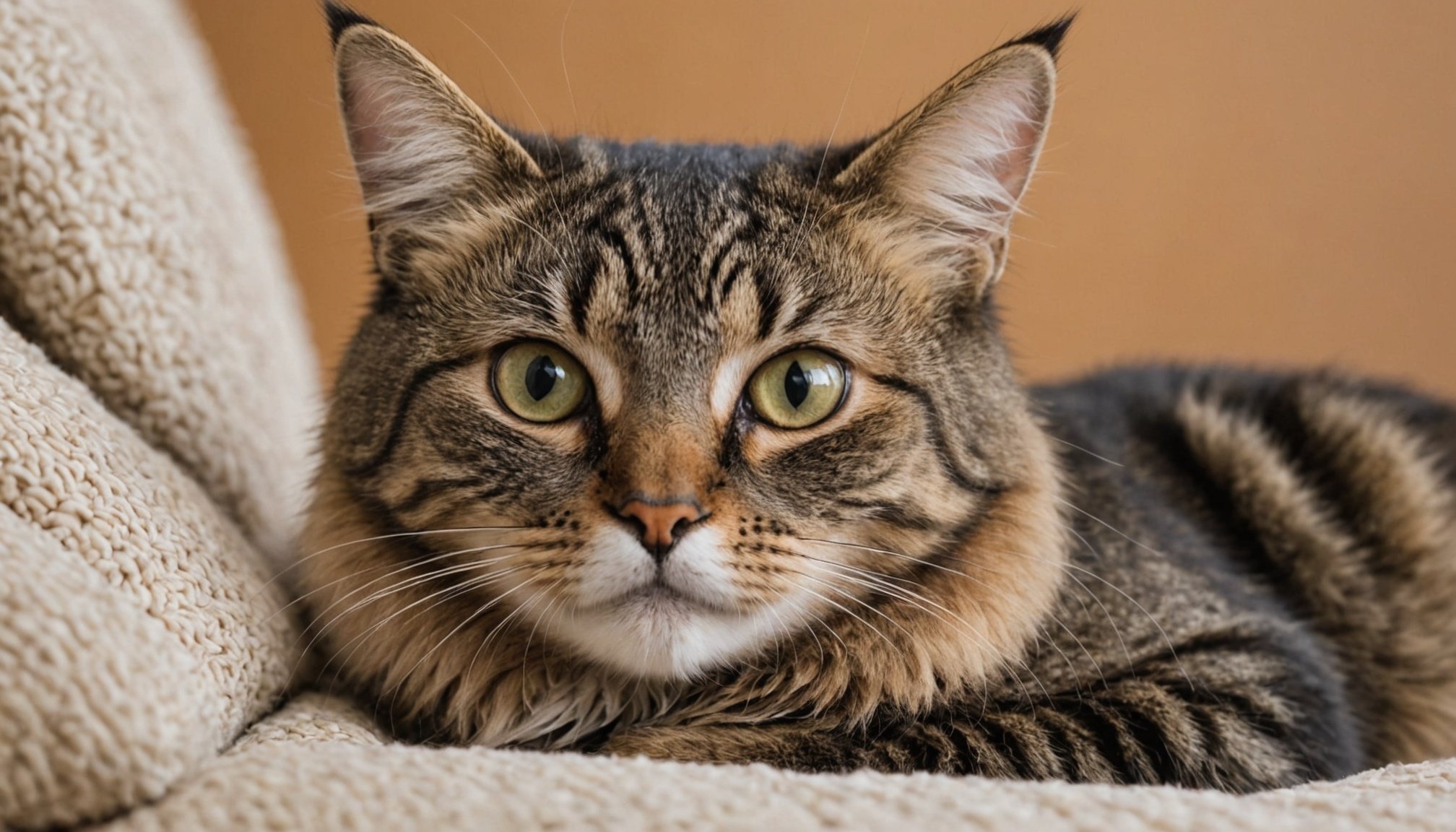Understanding Feline Breathing Patterns
Monitoring and understanding feline breathing can be essential for ensuring your cat’s health. A normal cat breathing rate is between 20 to 30 breaths per minute when resting. Anything outside this range may indicate health issues, such as respiratory distress or infection.
Several factors can influence a cat’s breathing patterns. Stress, temperature, and physical activity can all cause variations. Environmental allergens or irritants might also affect how your cat breathes. It’s important to consider these factors when evaluating whether a deviation from the normal cat breathing rate is concerning.
Lire également : Enhance your indoor cat”s natural hunting abilities: proven strategies for better health and joy
To monitor your cat’s respiration, observe the chest movements while your pet is resting. Count the number of breaths—inhalations and exhalations happening together—for one minute. For accuracy, it might be helpful to record this on different occasions to identify any abnormalities.
If your cat seems to be breathing rapidly, heavily, or struggling to breathe, it’s crucial to consult a veterinarian immediately. By knowing your cat’s normal breathing patterns, you can better assess when something may be wrong and seek timely medical attention. Understanding these patterns helps ensure your feline companion stays healthy and playful.
A lire également : Create a joyful diy puzzle feeder for your cat: a comprehensive step-by-step tutorial
Identifying Symptoms of Respiratory Problems
Observing your cat closely can reveal critical respiratory symptoms that indicate distress. Typical signs include coughing, wheezing, rapid or laboured breathing, and sneezing. These feline health indicators are essential in determining the state of your cat’s respiratory system. A persistent cough or wheeze often suggests an allergy or respiratory infection. Increased signs of cat distress, such as gasping for air or flaring nostrils, may indicate more severe conditions requiring immediate action.
Recognising the difference between mild issues and severe symptoms is crucial. Mild respiratory problems can manifest as occasional sneezing or a slight cough. If your cat’s symptoms worsen, with consistent wheezing or notable breathlessness, it signals a deeper concern and possibly an emergency. This distinction plays a significant role in deciding when to seek veterinary care.
The importance of timely intervention cannot be overstated. Quick response to respiratory symptoms not only alleviates discomfort but can also prevent complex issues. Monitor your cat’s behaviour continuously, noting any changes in its health indicators. By doing so, you safeguard your beloved pet against possible respiratory distress, ensuring a healthier, happier life for your feline friend.
Practical Monitoring Techniques
Effective cat respiratory monitoring at home is essential for maintaining your feline friend’s health. Begin by observing your cat’s normal breathing pattern when relaxed, noting the number of breaths per minute. This baseline helps in recognising changes. Place your hand on their chest or side for accuracy during the count.
Using Technology and Tools
Modern technology offers devices to enhance your monitoring efforts. Consider gadgets that provide precise breathing rates and patterns. Smartphones also have apps that help track these metrics over time, providing a comprehensive view of your feline health.
Establishing a Routine
Consistency is key in home care for cats. Set a schedule—perhaps weekly—to assess your cat’s respiration. Regular evaluations allow you to notice subtle changes, which can be crucial for early intervention.
Implementing a Plan
- Choose a routine time when your cat is usually calm.
- Use a quiet environment to ensure accurate counting.
- Record your findings in a journal or app to track trends.
These steps help ensure you maintain an optimal tracking of your cat’s health, ready to consult a veterinarian if any abnormalities are noted. Proper monitoring can make a significant difference in your pet’s wellbeing.
Preventative Measures for Cat Respiratory Health
Keeping your cat’s respiratory system healthy is essential for their overall well-being. Implementing preventative health tips for felines can significantly reduce the likelihood of respiratory issues. A clean environment is paramount. Regular cleaning of their living area, including litter boxes and bedding, minimises irritants like dust and pollen that can trigger problems. Use air purifiers to further maintain indoor air quality, enhancing cat respiratory care.
Vaccinations play a crucial role in prevention. Ensure your cat receives all required vaccines during routine vet check-ups. These vaccinations safeguard against infectious diseases, thus maintaining cat well-being. Discuss with your vet the most beneficial schedule tailored to your cat’s needs.
Dietary considerations are another vital aspect. Foods rich in Omega-3 fatty acids and essential nutrients support a robust immune system. High-quality cat food formulated for respiratory health can provide the necessary nutrients without excess additives. Consult your veterinarian to determine the best diet for your cat.
Incorporating these preventative measures can significantly improve your cat’s respiratory health, averting minor issues before they become significant problems. Proactively maintain your feline friend’s environment, vaccination, and dietary needs for their optimal well-being.
When to Seek Veterinary Care
Determining when to take your cat to the vet is crucial for ensuring your pet’s health. Vet emergency protocols guide us to recognise scenarios necessitating immediate attention. Understanding your feline’s respiratory symptoms, such as persistent coughing or difficulty in breathing, is vital. These symptoms could indicate severe health issues requiring urgent care.
Being aware of feline health emergencies like extreme lethargy, sudden vomiting, or loss of appetite helps to distinguish situations demanding instant vet intervention. Prompt action can significantly enhance recovery chances.
Preparation is critical before heading for a vet consultation. It’s essential to compile information about your pet’s recent medical history, current symptoms, and any medications. This aids the vet in assessing the situation accurately and expedites necessary treatments.
For effective communication, ensure you describe the severity and duration of symptoms. Detailing behavioural changes or exposure to toxins assists in the diagnosis and treatment process. Stay informed and prepared to act should emergencies arise, ensuring the well-being of your beloved feline companion.
Resources for Cat Owners
When caring for your feline friend, tapping into reliable cat care resources can make a world of difference. Identifying reputable veterinary services is essential. It’s a good idea to compile a list of trusted veterinarians and emergency contacts. Keep this list handy so you can act swiftly in case of an emergency.
For those eager to dive deeper into feline health information, several websites offer comprehensive insights. Resources like the International Cat Care and the American Association of Feline Practitioners provide detailed guidance on cat behaviour, nutrition, and various health concerns. Books by well-known veterinarians can also offer extensive knowledge and practical advice.
Connecting with local support groups or cat care communities can be another valuable resource. These groups often meet online or in person and share advice, experiences, and updates on recent advances in cat care. Finding such a community can also offer much-needed support and understanding from fellow cat enthusiasts. Engaging with these resources ensures your cat receives the best care possible while empowering you with the knowledge to make informed decisions.











